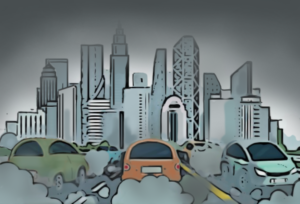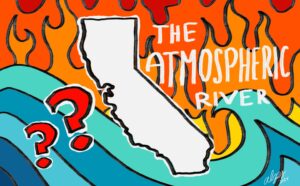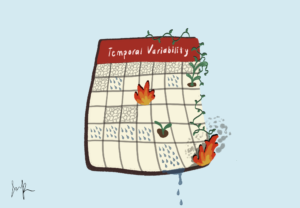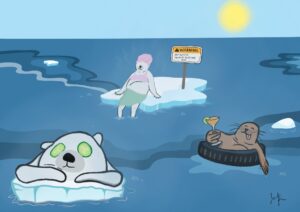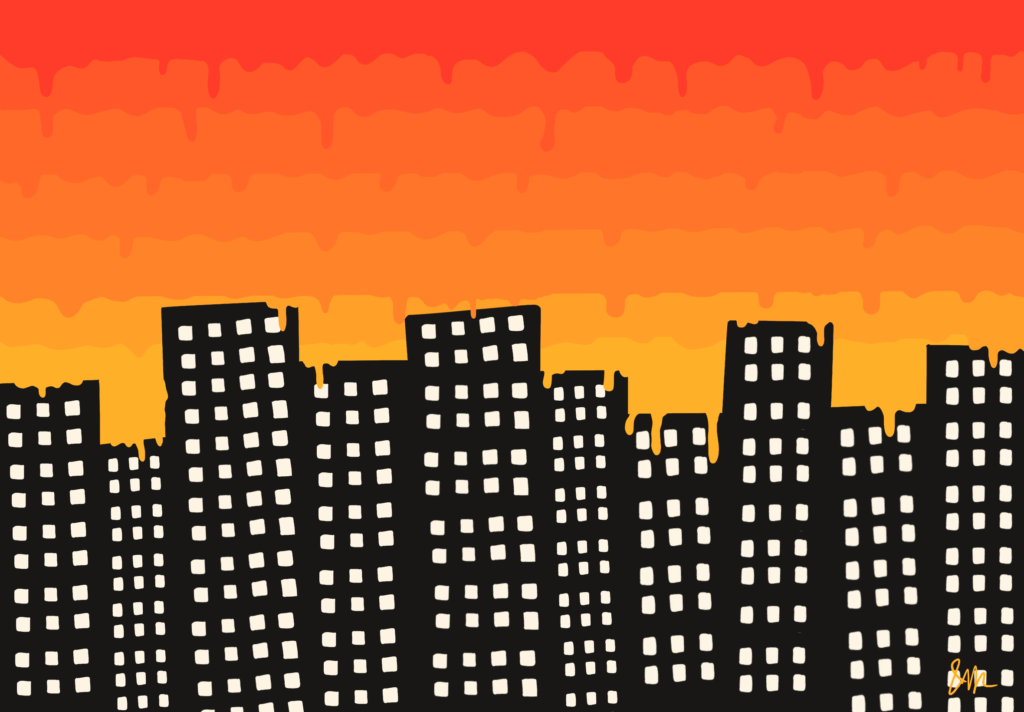
It seems every month has set a new record for heat waves across the United States. The daily and monthly averages seem to show a constant state of +10 degrees higher than average. I want to explore the trends in heat waves from 2020 onward in the US and globally. I will present the current knowledge and discuss some of the side effects of heat waves.
Heat waves are an effect of climate change, and their impact is felt throughout the United States. Heat waves in the United States have increased in length and frequency, so cities are now experiencing an average of six heat waves per year (US Global Change Research Program). The length of heat waves experienced in major cities in the United States has increased by 49 days since the 1960s (US Global Change Research Program). It appears the news constantly indicates a new city has a heat wave, and the weather app shows the daily weather is, on average, higher than previously recorded years.
Cities are more susceptible to heat waves than areas surrounding cities because of the heat island effect. Heat islands occur in cities because the materials used to construct cities absorb and retain heat more than natural materials. Constructed materials such as glass and metal to build skyscrapers attract more heat and cause cities to be hotter than their surrounding areas. Meanwhile, in suburban areas, there is a lot more landscaping and greenery, which maintains cooler temperatures than in cities.
The trend has been paralleled on a global scale as well. Globally, heat waves have been “more frequent, persisted longer, covered larger areas, and brought about hotter temperatures” (Harris, 2024). Hotter temperatures are not only uncomfortable but can also have negative impacts on infrastructure. When temperatures increase, our first response is to increase our air conditioning. One person increasing their home air conditioning would not be an issue, but when there are millions of citizens who increase their air conditioning, this puts a strain on the power grid. When a power grid is overworked, blackouts can result. High temperatures can also tax transportation systems, which can lead to delays and closures.
High temperatures can also be dangerous. There are populations that are highly susceptible to heat waves, especially the elderly and young children. These populations can go through stages of symptoms associated with heat waves much faster than other populations. The symptoms of heat illness include heat cramps, heat exhaustion, and heat stroke. The symptoms become increasingly dangerous and finally result in death if not treated. Approximately 1,220 deaths are caused by heat waves per year. Being aware of the signs of heat illness can help bring awareness and potentially save someone from symptoms of excessive heat.
Cities are trying to implement some interesting solutions to reduce the heat island effect. For example Barcelona opted to paint the rooftops white to use albedo to reflect sunlight rather than absorb. The city of Budapest has initiated programs to increase the number of cooling islands and water fountains in the city to help its citizens cope with heat waves. Other solutions include planting more trees and vegetation, and creating green roofs.
References
“Heat Waves | Globalchange.Gov.” US Global Change Program, www.globalchange.gov/indicators/heat-waves. Accessed 24 July 2024.
Harris, Lynette. “Climate Study Reveals Alarming Trends in Heat Wave Dynamics.” Welcome To Utah State University, 4 Apr. 2024, www.usu.edu/today/story/climate-study-reveals-alarming-trends-in-heat-wave-dynamics#:~:text=A%20study%20recently%20published%20in,covered%20larger%20areas%2C%20and%20brought.
Pine, Joshua, et al. “Urban Heat Island Effect Solutions and Funding.” National League of Cities, 9 Apr. 2024, www.nlc.org/article/2023/02/13/urban-heat-island-effect-solutions-and-funding/.
“Using Water to Cope with Heat Waves in Cities.” Climate, climate-adapt.eea.europa.eu/en/metadata/adaptation-options/water-uses-to-cope-with-heat-waves-in-cities. Accessed 23 July 2024.
The views and opinions expressed are those of the authors and do not necessarily reflect nor represent the Earth Chronicles and its editorial board.





